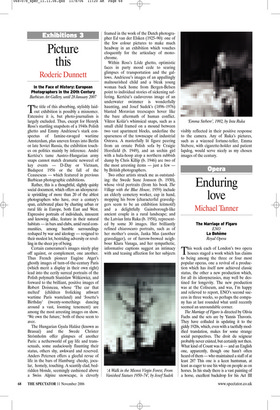Enduring love
Michael Tanner
The Marriage of Figaro ENO La Bohème Royal Opera This week each of London’s two opera houses staged a work which has claims to being among the three or four most popular operas, one a revival of a production which has itself now achieved classic status, the other a new production which, for all its idiosyncrasies, may well be destined for longevity. The new production was at the Coliseum, and was, I’m happy and relieved to report, ENO’s second success in three weeks, so perhaps the company has at last rounded what until recently seemed an unroundable corner.
The Marriage of Figaro is directed by Olivia Fuchs and the sets are by Yannis Thavoris. They have colluded in updating it to the giddy 1920s, which, even with a tactfully modified translation, makes for some strange social perspectives. The droit du seigneur probably never existed, but certainly not then. What kind of Count was it — and an English one, apparently, though one hasn’t often heard of them — who maintained a staff of at least 28? This one is a keen huntsman, at least as eager to use his whip on people as on horses. In his study there is a vast painting of a horse, excellent backdrop for his Act III aria of jealousy and rage, until it turns out to be a projection, the horse goes into a slowmotion gallop; and obligingly, for the Countess, in her great aria in the same act, metamorphoses into a rosebud that rapidly grows to full size and disintegrates. The last thing one expects is to see an opera set in the period specified by the composer and librettist, but this kind of thing is merely disorienting, and I can’t see that it makes any helpful points. Would one of the directors who practises only this kind of production explain what his or her purpose is?
Anyway, having gulped that down, one can enjoy the spruce and effective way in which particular situations are handled, and the lack of prodding. The set for Act I is two-layered, Susanna and Figaro’s bedroom looking like the kind of thing one would hope not to find in a seaside B&B. Beneath it is the row of room-named bells, and in front of them several lines of carnations, being watered as the audience enters, while once the overture gets under way five maids recklessly pluck geese. The Countess’s boudoir is pink and silver, and she sports a vermilion boa. It could almost be the world of early Coward. Is it suitable for the sublime action of Figaro? With this cast, mainly it is. The Count is Mark Stone in his best performance to date, commanding in presence and in voice, priapic (he has to use a paper to hide his erection after his duet with Susanna), and infuriatingly intent on occupying the moral high ground. Unfortunately, the Countess is, at the moment, the one major blemish. Lisa Milne is a radiant singer, as always, but she looks most uncomfortable in this role. Motherly in appearance, she was not intended by Nature to wear hobble skirts; or to engage, however reluctantly, in erotic plotting. Nor can she summon up the majesty for the great scene of forgiveness. This is a simple piece of miscasting.
Everyone else is at least suitable, and at best brilliant. Happily the Susanna of Marie Arnet has everything that this central figure needs: strength of purpose, shrewd assessment of others, warmth of heart and unflagging vitality; Arnet also has a lovely, silvery and sexy voice which she used to stunning effect in ‘Come quickly’, her Act IV aria. Jonathan Lemalu has an equally fine voice, but he barked too often, and needs to feel his way into this complex character, though there is every sign that he will. Victoria Simmonds continues to be a winning Cherubino, treading the tightrope of androgyny with graceful precision. Roland Böer’s conducting is excellent, though not in the same league as Colin Davis’s. He found lots of relevant unusual detail in the orchestra, and above all he paced the acts so that they were convincing and just in their alternation of furious action and reflection, while altogether avoiding the excesses of Harnoncourt in his absurdly angry performance at Salzburg this year. I look forward to seeing this production many more times.
John Copley’s La Bohème was recognised in 1974 as a production which ‘need never change’, and that’s how it is. Marcelo Alvarez sang and acted Rodolfo better than any other part he has taken at the Royal Opera for several years, and if Katie Van Kooten is too tremulous-sounding a Mimi, she brings harrowing pathos to the role, and Act III, thanks to the expert conducting of Philippe Jordan, and the ever-fresh touches that Copley himself (how many other producers return to manage their stagings after three years, let alone 30?) graces that miraculous act with. If the whole performance didn’t quite feel a vintage one, that may well be my fault rather than its — oh, and the fault of an audience so welded to their mobile phones that they couldn’t wait for the curtain to descend to see what important textings awaited their serious attention.



































































































 Previous page
Previous page